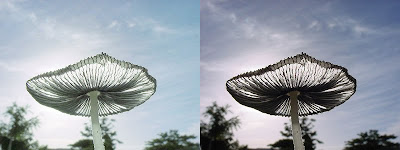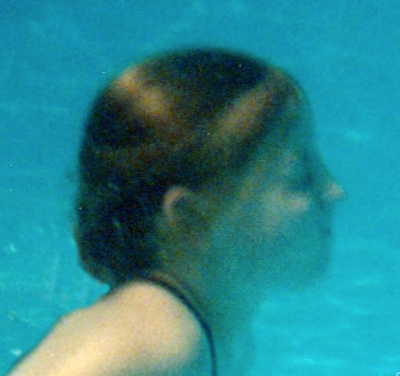Photo Retouching:
Backlit Mushroom:
Image->Adjustments->Color Balance
Image->Adjustments->Variations
if you go too far adding more of a color, hold the option key and the cancel button will turn into a reset button
after variations, go to Edit->Fade Variations to tone down a variation that too crazy
Image->Adjustments->Hue/Saturation…
Hue-moves color wheel around
saturation-how intense the color is
lightness-lighter/darker
can pick specific colors to edit the hue/saturation/lightness in (blue, red, yellow)
eyedropper with + symbol can select very specific colors (such as the dark green in the trees in the background)
as with variations, you can go to Edit->fade variations!
remember to check and uncheck the preview box so you can compare the before/after images!
Color Cast Chicken:
Image->Adjustments->Levels
can change the upper and middle registers of specific colors (red/green/blue)--if you pull down the upper arrow where there is little blue, it adds more blue in the image! very helpful to get rid of yellowing/strange color cast on the image
Image->Adjustments->Brightness/Contrast
brighten the image, or bring the contrast down (or up)
Image->Adjustments->Shadows/Highlights
click on "show more options" at bottom left to expand options here
Image->adjustments->curves
move around the entirety of your curves to adjust the colors (this one can be touchy! This is similar to levels, but a different visualization
Auto levels, Auto contrast, auto color can help you too, but sometimes the computer doesn't get it all right!
Some handy Photoshop websites/artists for inspiration:
Pxleyes
Worth 1000
Bert Monroy (Damen)
Shot By Robert (game glitches)
Kyohei Abe
Look at the comparison here:


Remember: Photoshop CANNOT fix an image that is out of focus!
HW: Start working on Project 1! (267-300 dpi, approx max 24 inches in any direction)
FIELD TRIP SATURDAY. Meet at loading dock at 9:15AM!
Map to branch Ave:
View Larger Map
NPG metro stop is Gallery Place-Chinatown, and the gallery is there once you walk out (if you take the 7th and F st exit) in case you're going separately. Bring some metro fare!
map to gallery:
View Larger Map
here is parking near the NPG for those driving






